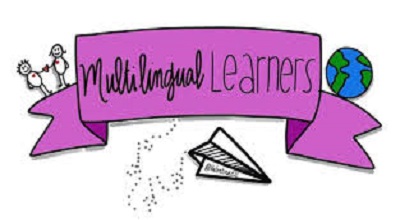Multilingual teaching strategies
Multilingual teaching strategies: In today’s globalized world, classrooms are becoming increasingly diverse, with students speaking multiple languages. The Multilingual teaching strategies are essential for fostering inclusivity, improving comprehension, and enhancing academic success for all learners. This comprehensive guide explores the latest multilingual teaching strategies, complete with practical examples, to help educators create an effective and engaging learning environment.
Whether you’re teaching English Language Learners (ELLs) or working in a bilingual classroom, these strategies will equip you with the tools needed to support every student’s linguistic and cognitive development.
Understanding Multilingual Education
Definition and Importance
Multilingual education refers to teaching academic content in two or more languages. It supports students in developing proficiency in their native language while acquiring additional languages.
Why is it important?
- Promotes cognitive flexibility
- Enhances cultural awareness
- Improves academic performance
- Prepares students for a globalized workforce
Benefits of Multilingual Classrooms
- Improved Problem-Solving Skills – Multilingual students often outperform monolingual peers in critical thinking.
- Greater Empathy and Social Skills – Exposure to multiple languages fosters cultural sensitivity.
- Higher Academic Achievement – Strong literacy in the first language supports second-language acquisition.
Key Multilingual Teaching Strategies
1. Translanguaging
Translanguaging allows students to use their full linguistic repertoire to enhance learning.
Example:
- A teacher encourages Spanish-speaking students to discuss a science concept in Spanish before presenting it in English.
2. Scaffolding Techniques
Scaffolding provides temporary support to help students grasp new concepts.
Example:
- Using sentence frames like, “I think ___ because ___” to help ELLs participate in discussions.
3. Culturally Responsive Teaching
Incorporating students’ cultural backgrounds into lessons increases engagement.
Example:
- Reading folktales from students’ home countries and comparing them with local stories.
4. Peer Learning and Collaboration
Group work helps students learn from each other.
Example:
- Pairing a native English speaker with an ELL for a research project.
5. Technology Integration
Digital tools like Google Translate and Duolingo support language learning.
Example:
- Using language-learning apps for vocabulary reinforcement.
Practical Examples of Multilingual Strategies
1: Using Visual Aids and Realia
- Strategy: Incorporate images, objects, and gestures to reinforce vocabulary.
- Application: Teaching the word “apple” by showing a real apple and its name in different languages.
2: Bilingual Glossaries and Word Walls
- Strategy: Display key terms in multiple languages.
- Application: Creating a word wall with science terms in English and Spanish.
3: Storytelling in Multiple Languages
- Strategy: Read or narrate stories in students’ native languages.
- Application: A teacher reads a story first in Mandarin, then in English.
4: Multilingual Group Projects
- Strategy: Assign collaborative tasks where students use multiple languages.
- Application: Students create a presentation with slides in English and French.
5: Digital Tools for Language Support
- Strategy: Use apps like Flipgrid for multilingual video responses.
- Application: Students record book reviews in their preferred language.
Challenges and Solutions in Multilingual Teaching
1: Overcoming Language Barriers
- Solution: Use gestures, visuals, and simplified language.
2: Addressing Cultural Differences
- Solution: Incorporate multicultural resources and discussions.
3: Ensuring Equal Participation
- Solution: Provide think-pair-share opportunities and sentence starters.
Latest Trends in Multilingual Education
1: AI and Language Learning
- AI-powered tutors like ChatGPT assist in personalized language practice.
2: Gamification in Multilingual Classrooms
- Language games like Kahoot! make learning interactive.
3: Global Collaborative Learning
- Virtual exchanges with schools abroad enhance language skills.
Conclusion
Multilingual teaching strategies are vital for creating inclusive and effective classrooms. By implementing translanguaging, scaffolding, peer collaboration, and technology, educators can support every student’s success. Stay updated with the latest trends to ensure your teaching methods remain innovative and impactful.
